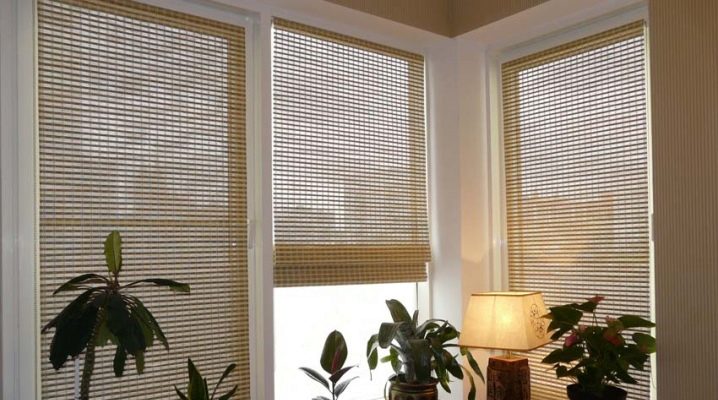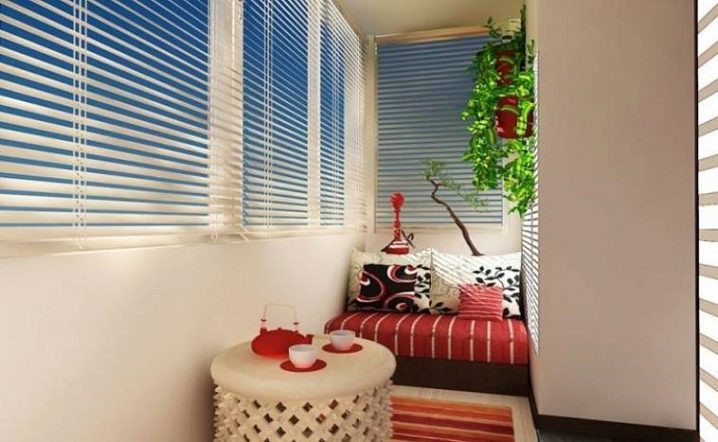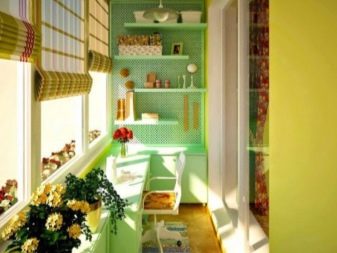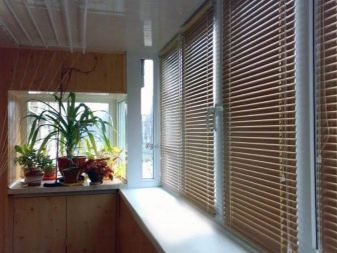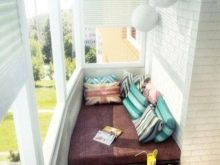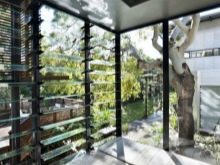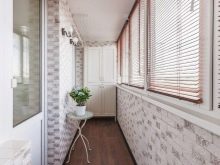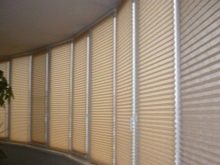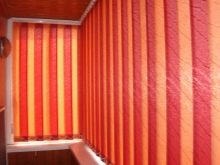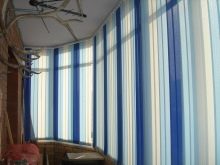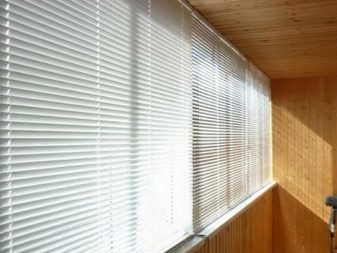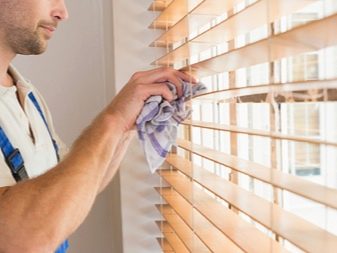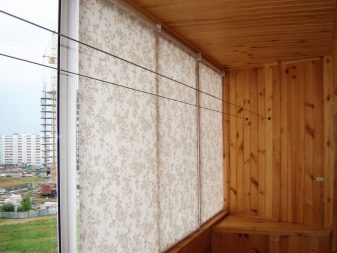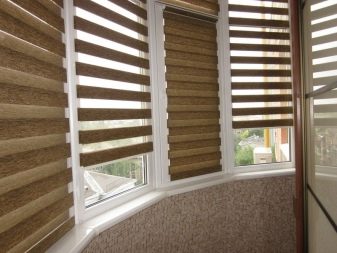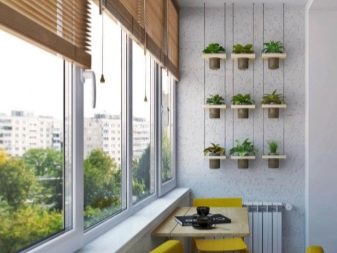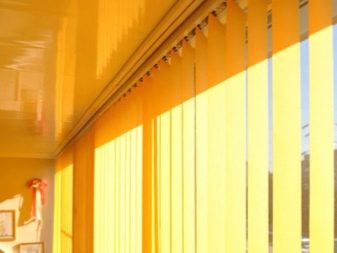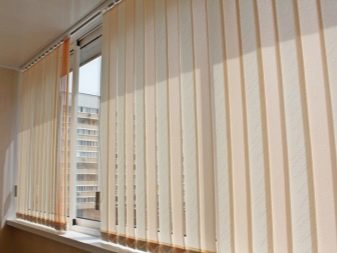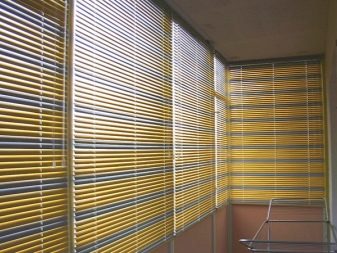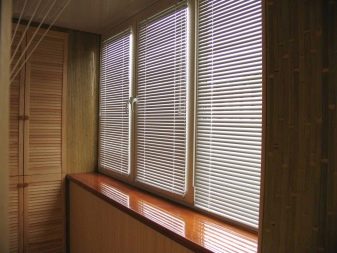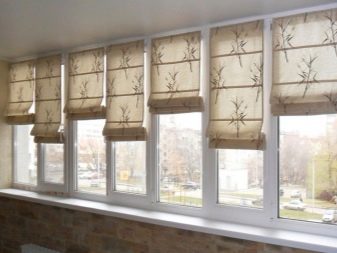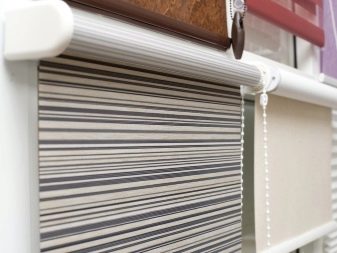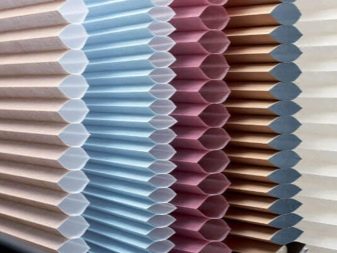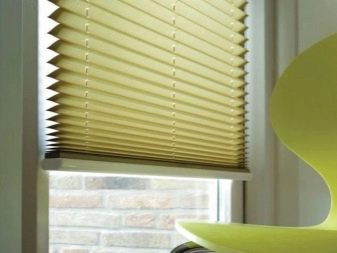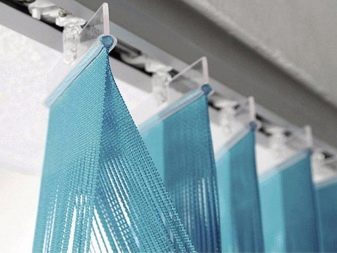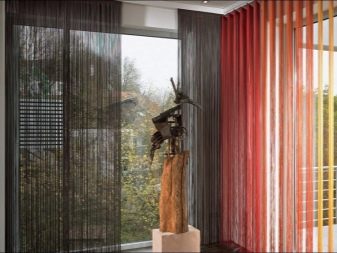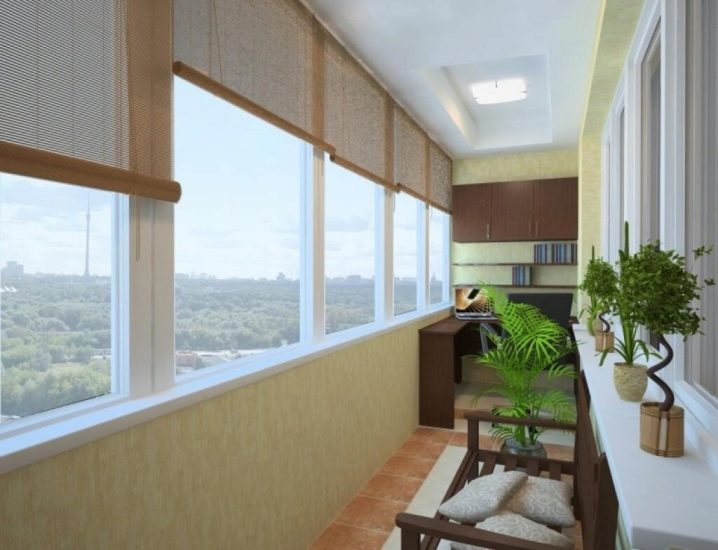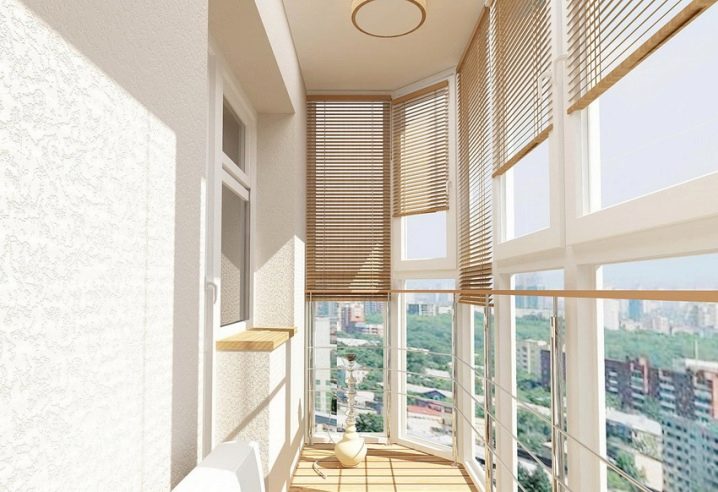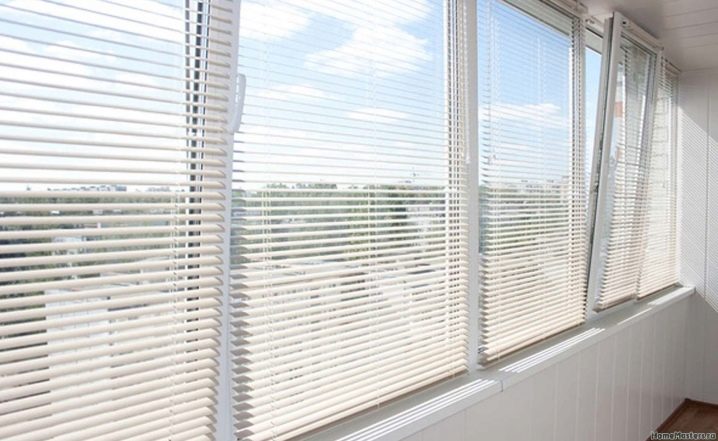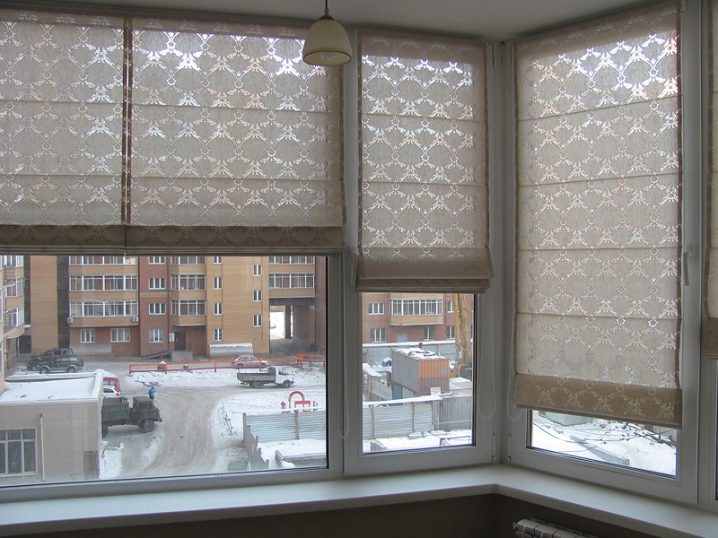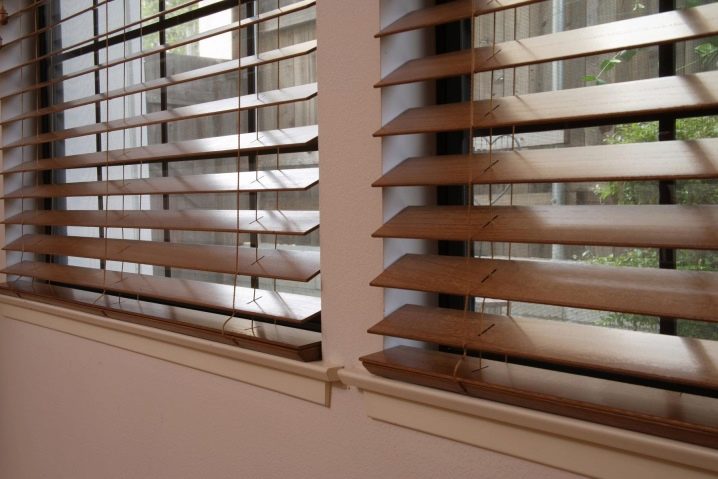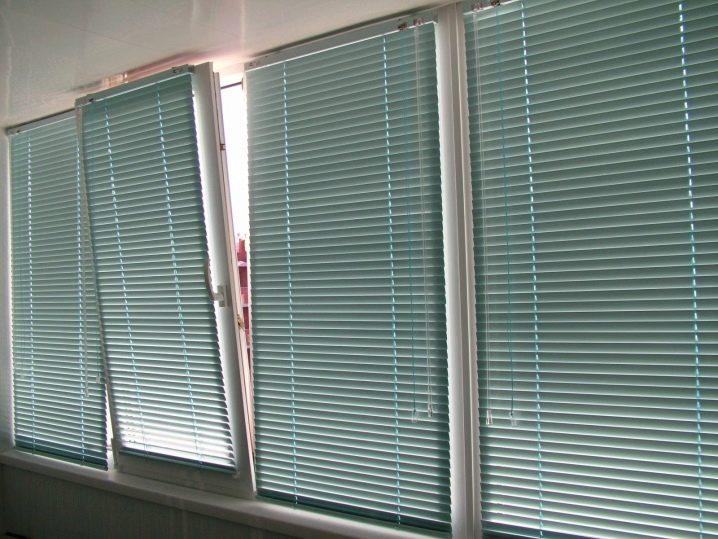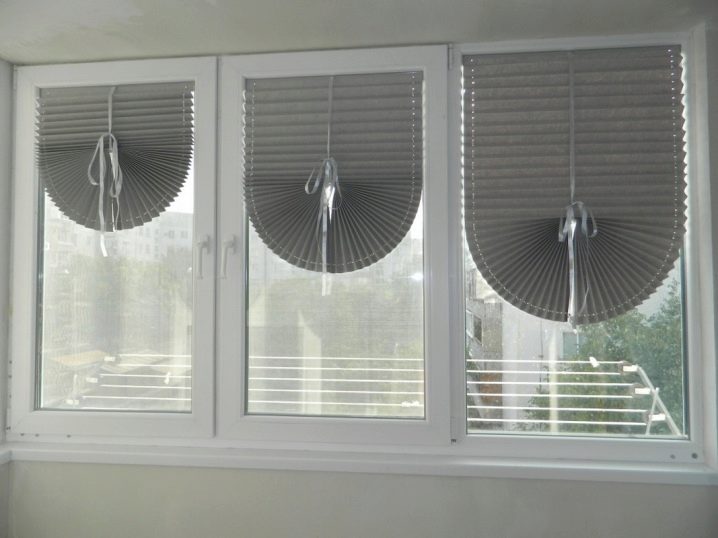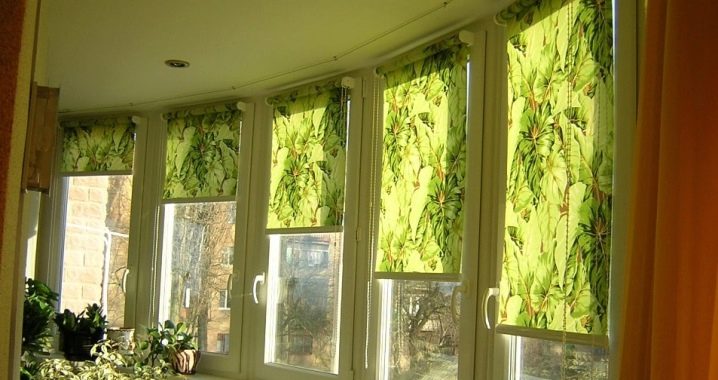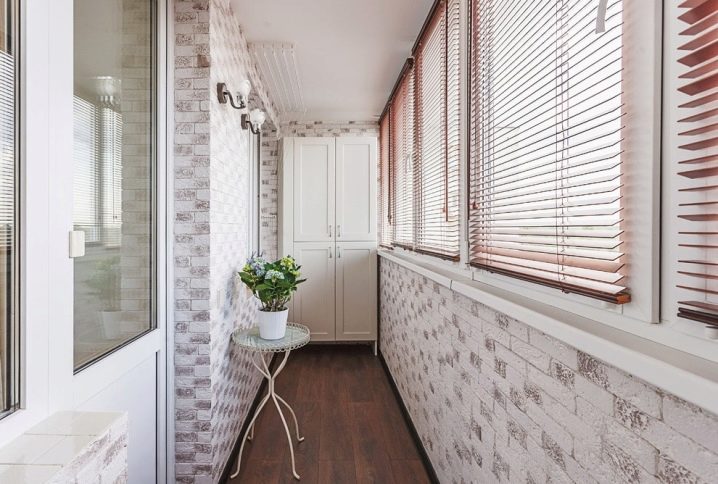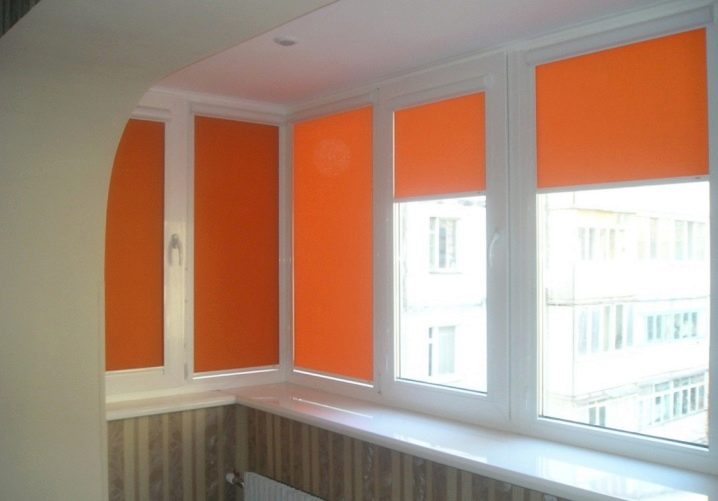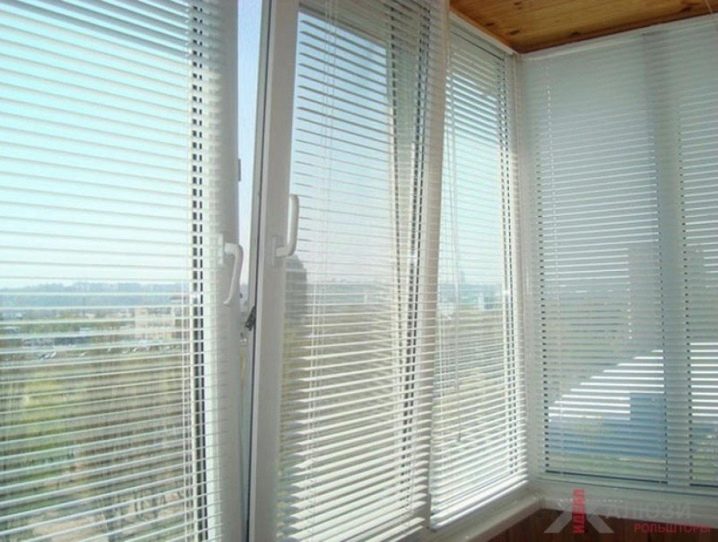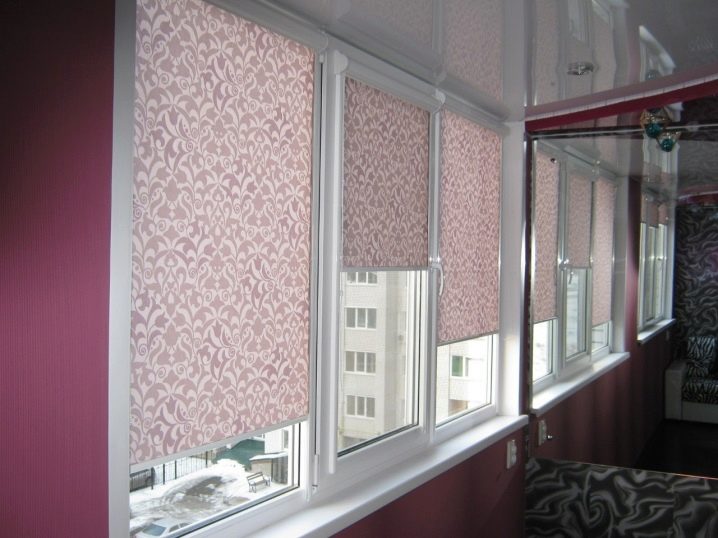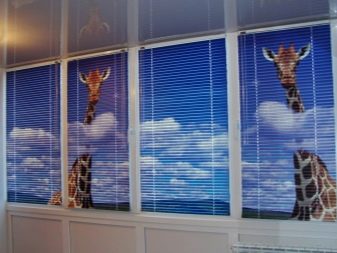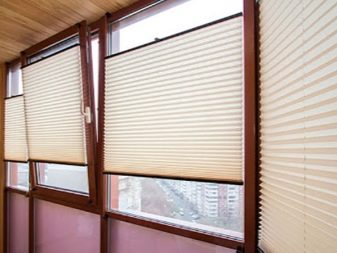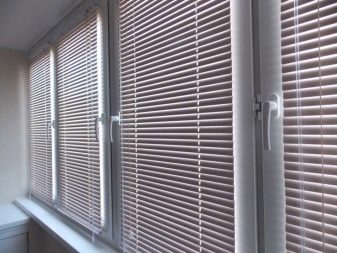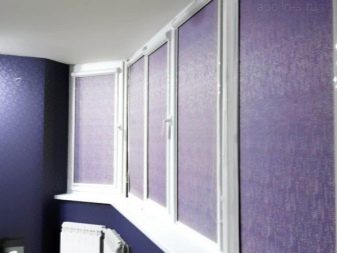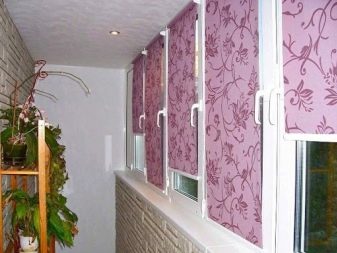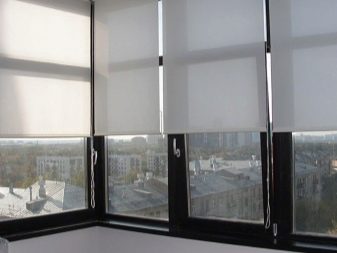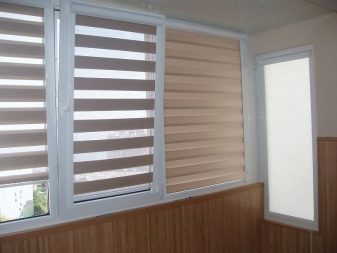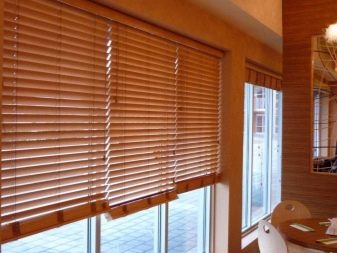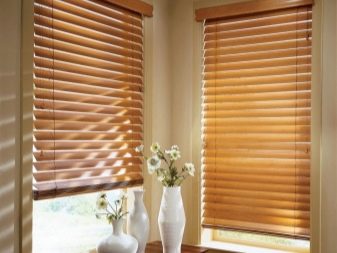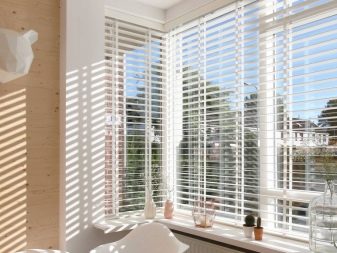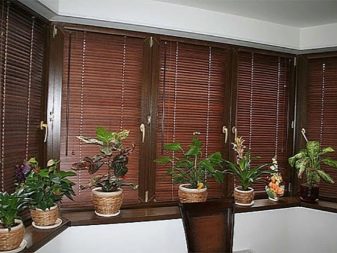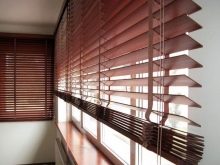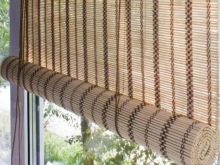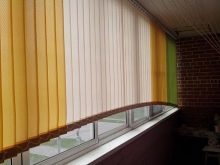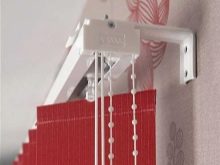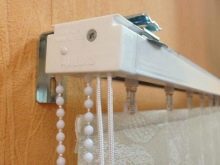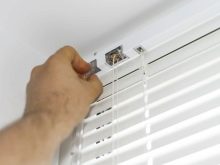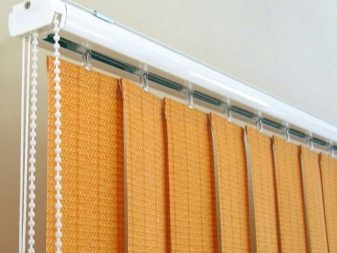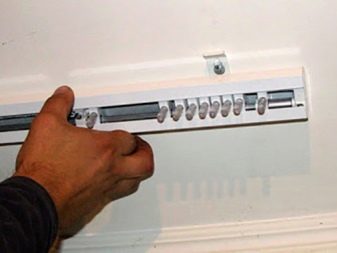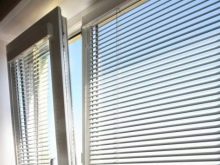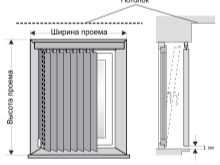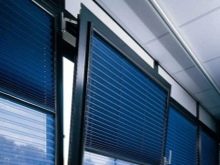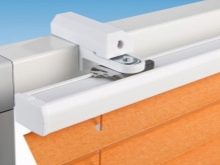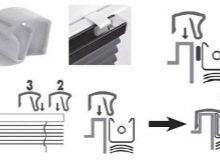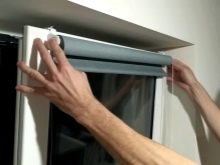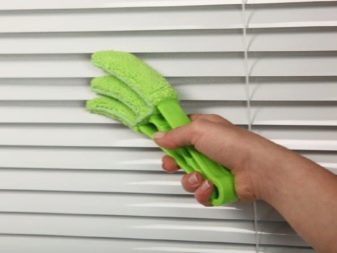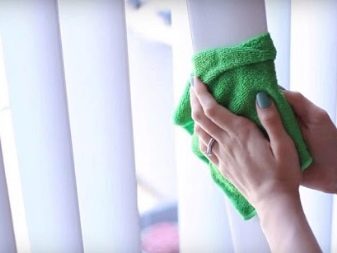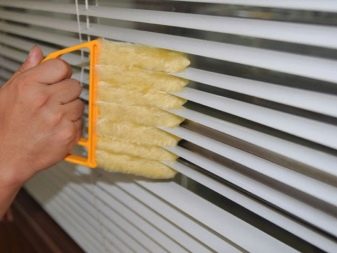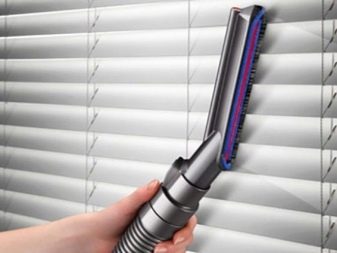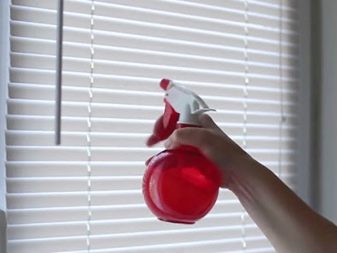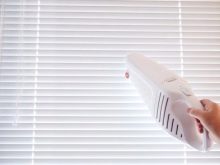Blinds on the balcony and loggia
Vertical curtains, roller and horizontal, fabric from the sun and other options for blinds on the balcony and loggia can be called the best choice for ensuring privacy and adjusting the luminous flux. Installing such a structure on a window frame is quite simple. It is much more difficult to understand which models of blinds are best suited for balcony sliding or hinged windows and doors.
Advantages and disadvantages
A special type of curtain - blinds - is installed on a balcony or loggia to protect it from the sun, as well as from prying eyes from the street. In their design, there are several strips connected to each other with a gap. Depending on the type of blinds, their lamellas are located vertically or horizontally, have a length and width according to the size of the window opening.
The obvious advantages of such products include a number of factors.
- Ease of care. Special coatings protect the surface of the lamellas from dust settling. They are not subject to creasing, they always look attractive, they can be easily put in order with water and soap.
- Convenience of adjustment. The degree of illumination of the room can be selected by changing the angle of inclination of the lamellas relative to the window sashes. This allows you to maintain an optimal operating mode, taking into account the season and climate characteristics. You can literally change the position of the slats in one motion.
- Free air circulation. Even roller blinds made of fabric let it through well. Vertical and horizontal systems do this even better. The windows on the balcony can be opened for ventilation without squinting from the blinding sunlight.
- Ease of installation. You can cope with this task with your own hands.
- Variety of designs. You can order lamellas to match the color of the finish, with a smooth or textured surface, in various patterns.
Modern design solutions allow not only to protect the balcony from the sun, but also give it a bright personality.
There are also disadvantages. Not all types of balcony blinds can be called universal. In addition, they have to be cleaned of dirt, sometimes repaired. If a jam occurs, the system will have to be dismantled. In some cases, the louvers prevent the frame from opening normally.
Species overview
Various design options allow you to adapt the blinds to specific operating conditions. For example, with a sliding type of frames, ceiling mounts are used. On the south-facing balcony, reflective blinds can be used to keep the interior at a comfortable temperature. Roll-up models are suitable for loggias combined with living quarters.
By their design, blinds are classified into several types.
- Vertical. The lamellas in them are located parallel to each other, from top to bottom, collecting, move sideways. They are fixed on a curtain rod made of aluminum or plastic, and are controlled with a cord. And also in the design there is a set of weights and sliders, a chain that connects all the elements. Mounting is carried out to the ceiling or walls, on brackets, blinds can be made from different materials, they can have a textured surface.
- Horizontal. They can be installed directly on the window frame, tightly adhering to the glass, and have lamellas located parallel to each other. In such systems, transformation mechanisms of the "accordion" type are used, fastening is carried out on the slope of the opening, wall or frame.Usually, horizontal blinds are mounted individually for each sash, which makes it possible to supplement the glazing with a window sill, and does not interfere with opening.
- Rolled. Such types of window light-shielding structures are also called roller blinds. They roll up inside a special box, on a shaft, they are mounted on the ceiling or wall, as well as directly on the frame. Both solid models and “day-night” versions with transparent inserts on two canvases are produced, which are shifted relative to each other.
This option is very convenient for installation both on windows inside the balcony and directly on frame glazing.
- Plisse. These blinds are similar to roller blinds, but have a corrugated structure. Models are available for swing-out structures, roof windows and other types of glazing. They are fastened between eaves or on brackets, on guide cords, opening is carried out by pulling a cord or chain, installation of an electric drive is possible.
- Thread. They are used on balconies with panoramic glazing, are fixed only at the top, and have a vertical arrangement. Instead of ordinary lamellas, colored threads with weights are used here, which can be shifted to the side or around their axis. When closed, these blinds look like a weightless curtain swaying in the wind.
Each design has its own characteristics. Their choice is often dictated by the type of sash or glazing used on the balcony. Vertical models go well with sliding windows and opening systems. Horizontal blinds are suitable for swing windows.
Materials (edit)
Depending on what kind of material is used as a base, blinds are wood and textile, metal and plastic. Each of these options has advantages and disadvantages.
In any case, the material should be lightweight, durable, UV-resistant.
Several varieties are quite consistent with these requirements.
- Plastic. A popular option for low weight, high strength and resilience. Polymeric blinds withstand prolonged contact with direct sunlight, are easy to clean, and are suitable for installation on various types of glazing. Their great advantage is the variety of colors and shades.
- Fabric. Practical and easy-care polyester, resistant to sunlight, is used for their manufacture. They have a long service life and are available in a wide range of colors. Textile blinds can decorate a balcony or loggia in the French style.
- Wooden. Natural bamboo, pine blinds are assembled from thin strips, varnished to protect against weathering. To limit the length, they use a special handle. Such blinds look good on the balconies of country houses, they can have a bright color or a natural shade.
- Metallic. For their manufacture, lightweight aluminum is used, painted or retaining its natural shade. This is a durable version of blinds that can withstand significant operational loads. Nice addition to modern style balconies.
- Paper. It is from this material that pleated curtains are made. They are not very practical, they are only suitable for use inside the balcony, behind the glazing, they do not give complete privacy - with the onset of darkness, such a fence will turn the space inside into a theater of shadows.
The choice of materials is largely interconnected with the type of blind design. For example, roll options are most often made with fabric, and horizontal ones with plastic.
Color solutions
Modern safety devices for balconies are available in a wide variety of colors and designs. Each species has its own characteristics.For example, it is customary to make pleated blinds models in pastel colors - from white to light beige, blue, pale pink. Roller blinds are made in plain colors or with thematic prints - floral ornaments, abstract and geometric patterns.
Color solutions for blinds systems can also be divided into several groups.
- Neutral. This includes versatile solutions that fit almost any balcony design. The most commonly used tones are gray, light beige, milky or cream.
- Contrasting. They constitute a sharp dissonance with the design of frames or other details of the balcony decoration. Here you can focus on bright golden or silver options, orange, light green, deep pink shades.
- To match the frames. In this case, the shutter system is selected based on the design of the main glazing. Most often, a white or brown shade is used, as well as an imitation of a wood texture or metallic colors.
- Matching the color of the finish. In this case, the blinds are selected based on the overall style of the balcony. For example, for Mediterranean aesthetics, blue and white tones are suitable, Art Deco will accentuate the dramatic combination of red and black. The laconicism of the modern style will be complemented by the graphite-milk range of "dominoes".
- With 3D prints. Such a design of the blinds allows you to create volumetric patterns and ornaments on 1 or 2 sides of the canvas in a closed form, transfer photographs or reproductions of paintings to their surface.
If the balcony is finished with siding outside, the blinds can be matched to the panels. This combination will look quite appropriate, neutral and aesthetically pleasing.
What are the best blinds to choose?
When choosing blinds for balcony windows or a door with sliding doors, you have to pay attention to a number of important points.
- Balcony type. On an open, with an iron fence and measuring 3 by 6 meters, horizontal blind systems on an aluminum base, like garage ones, are suitable. They will not only help regulate the level of privacy, but will also become an additional obstacle in the way of intruders. Glazed options with plastic frames are best combined with blind models installed directly on the window block. Vertical sun-protection structures are not placed on small balconies.
- Design preferences. Lightweight air-permeable roller blinds or pleated blinds can decorate the balcony of a city apartment or a country landscape. Metal and plastic models are in better harmony with modern building facades and interior furnishings.
The greatest variety is given by roll-up models, produced with various thematic prints or simply in a single-color version.
- Glazing type. For sliding systems, it is better to choose vertical blinds. For swing-out, other types of structures are suitable. On aluminum frames, it is impossible to install those types of shading structures that require fastening directly to the sash.
- Dimensional compliance. In width, the shutter system is made equal to the frame opening. The length should be slightly shorter than the glazing - by 5-10 cm.
- Manufacturing material. Wooden blinds are installed on frames of the same material. Aluminum and plastic models are considered more versatile. Textile options are selected based on the degree of illumination of the balcony or loggia - they can be as dense or translucent as possible.
- Convenience of adjustment. If the balcony periodically requires complete opacity, it is worth giving preference to aluminum horizontal blinds. In this case, it will be easiest to choose the degree of intensity of the sun's rays. Vertical options have to be opened before opening the window. Roll-ups are characterized by the versatility of fastening, but it is impossible to adjust the degree of illumination with them (except for day-night models).
These are the basic parameters to rely on when choosing suitable blinds for use with balcony glazing.
Installation
You can fix the blinds in different ways. Some types are easy to hang even without drilling, others cannot be installed directly on the frame or in the opening.
All the methods that are used during installation deserve more careful consideration.
- To Wall. In this case, the blinds or brackets for them must be screwed on, having previously made technological holes. The method is suitable for individual glazing units, the structure will overlap the opening by 10 cm at each edge.
Wall mounting is not used on loggias longer than 6 m, as well as in combination with sliding opening systems.
- To the ceiling. In this case, the blinds act as curtains, completely blocking the view. It is a good choice for apartments on the lower floors, as well as for low-rise buildings.
- On the window frame. In this case, roller blinds, horizontal blinds or pleated blinds can be securely fixed to the balcony glazing unit. Each sash requires individual assembly.
- No drilling. In this case, the blinds are installed directly on the frame, fixed with double-sided tape. Adjustment is usually not provided.
Since the blind systems do not differ in significant weight, they can be mounted on light dowels or anchors, and sometimes even on special mounting devices that come with the kit.
Care Tips
The basic rules for keeping any blind system in order involve more than just cleaning or occasional wet cleaning. By the way, not all types of such light-shielding structures can be washed. But absolutely any options can be dry cleaned.
Care recommendations for different types of blinds should be considered in more detail.
- Fabric rolls shown dry clean clothes brushes or a vacuum cleaner no more than 1 time per year, wet cleaning is completely prohibited. To remove soot and dirt, means are used to push and collect them on the surface. You need to buy them in household chemicals stores. Small stains can be easily removed with a regular eraser.
- Vertical / horizontal plastic or metal options vacuum cleaned weekly. Wet cleaning is applied monthly using soft textiles and water. Stubborn dirt is removed with liquid soap.
- Pleated blinds require special care. Pollution is brushed off them with a brush. Wet cleaning is performed only if the product is made of textiles.
- Wooden lamellas are only dry-cleaned. It is carried out no more than 1 time in 6 months. After processing, the surface is covered with an antistatic agent.
- You can remove unpleasant odors from hard surfaces with ordinary table vinegar. It is added to water, and then plastic or metal lamellas are wiped off. Do not use acetone-containing solvents for maintenance.
- The roller shutter mechanism is periodically lubricated. It is completely cleaned at least once a year.
- It is most convenient to wipe the blinds with a damp cloth.by turning the slats 180 degrees.
Considering all these tips, you can easily choose, install and maintain in order any blind system for the balcony and loggia.
A visual overview of the types and properties of modern blinds is presented in the following video.
